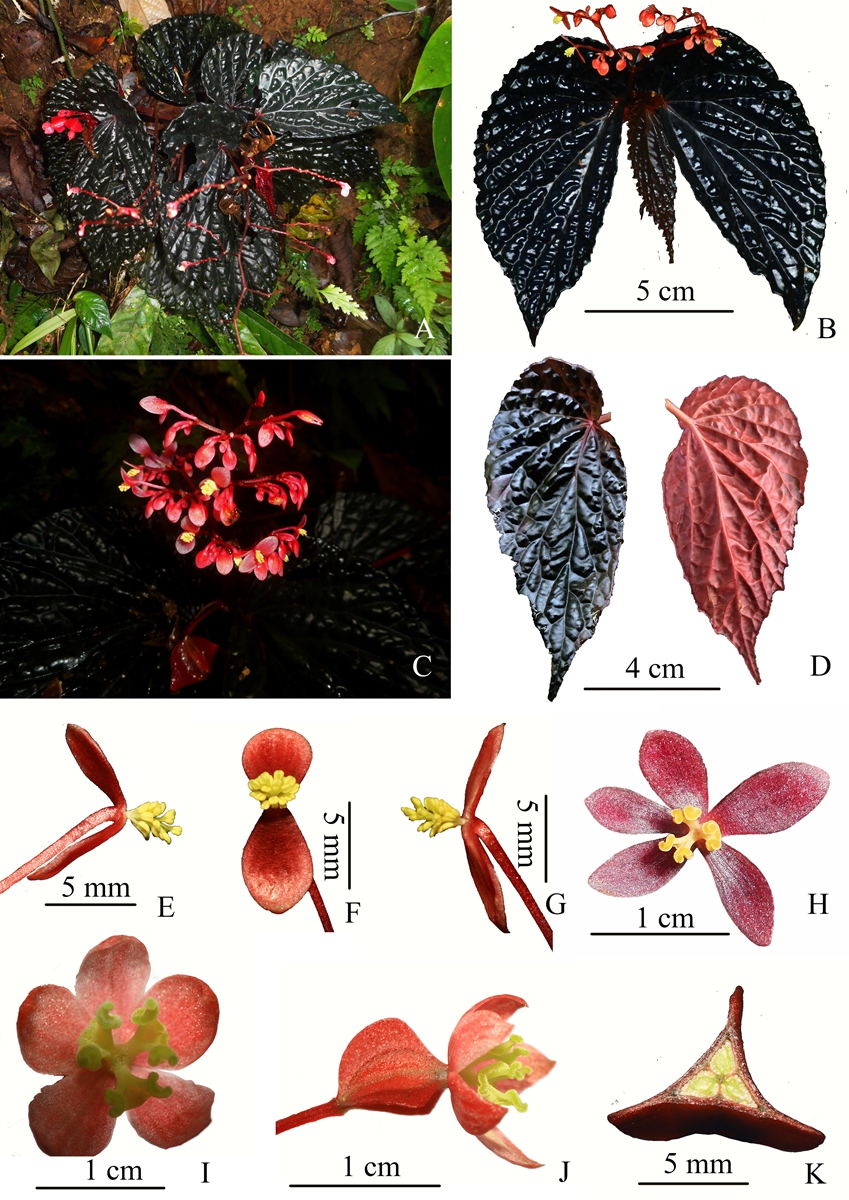The pantropical genus Begonia is the sixth largest genus of flowering plants. Asia has the richest diversity of Begonia (ca. 1000 species), and Indonesia is one of the centers of Begonia diversity in Southeast Asia.
In a study published in Taiwania, researchers from Xishuangbanna Tropical Botanical Garden (XTBG) report a very attractive Begonia with dark olive to black leaves, originally from west Kalimantan, has recently entered into cultivation in China. They named it as Begonia daunhitam.
Begonia daunhitam is similar to B. darthvaderiana in having dark olive nearly black leaves and pink flowers, but differing in having a dichasial cyme inflorescence, adaxial surface of leaves being strongly bullate, denticulate at the margin and without a narrow silvery band along the leaves margin and many more stamens.
Begonia daunhitam grows in wet areas on slopes near the river under dense canopies of dipterocarp forest at elevation 200–300 m above sea level. It flowers from December to January, fruits from February to March.
Only four subpopulations are found in a very restricted area and not yet known from other populations. The researchers therefore proposed the conservation status of the new species to be Vulnerable according to the standard of IUCN.
Contact
WANG Wenguang
Department of Gardening and Horticulture, Xishuangbanna Tropical Botanical Garden, Chinese Academy of Sciences, Menglun, Mengla, Yunnan 666303, China
E-mail: wangwenguang@xtbg.ac.cn

Begonia daunhitam

